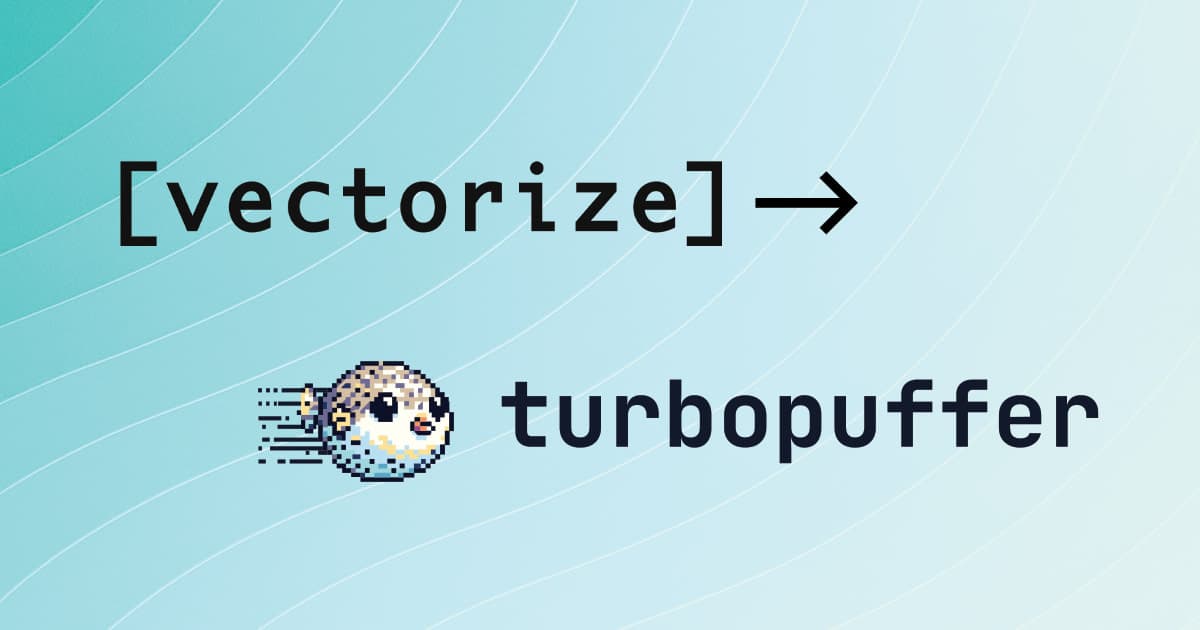Vectorize + Turbopuffer: Structured Data at High Speed

Turbopuffer is now available as a destination in Vectorize — giving you a way to transform unstructured content into structured, queryable context, and store it in a high-performance vector-native system.
Whether you’re building agents that need memory, or orchestrating workflows that rely on structured reasoning, this integration helps you go from raw data to indexed context with minimal setup.
From Documents to Structured Context
Vectorize pipelines handle the front half of the problem: ingesting source data, chunking it into meaningful units, enriching it with metadata, and embedding it with your model of choice.
Now, you can send those embeddings — along with their full structured payload — directly into Turbopuffer. That makes them available for fast retrieval in downstream systems, including agents, orchestrators, or custom apps that need contextual awareness.
Designed for Reasoning at Speed
Turbopuffer is built for high-performance vector search with low-latency querying and a minimal operational footprint. That makes it a strong fit for any system that needs to retrieve context quickly — whether you’re powering agents, search tools, or orchestration layers built on structured embeddings.
Pairing it with Vectorize gives you full control over what gets embedded, how it’s chunked, and how agents interact with it downstream.
How to Use It
You’ll find Turbopuffer as a destination option when creating or editing any pipeline in Vectorize. Just connect your instance and select it during pipeline setup — no extra config required.
Want to walk through it? See the setup guide.